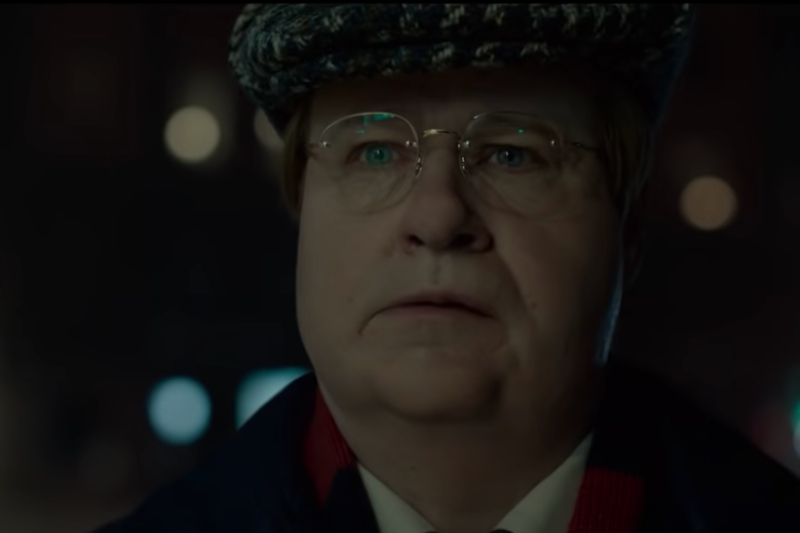
“Stig Engström. Very eager for media attention,” a Swedish detective intones.
“What’s he saying?”
“That’s the thing. He keeps changing his story.”
Netflix’s official trailer for An Unlikely Murderer takes us to Stockholm, 1986. An assassin shoots Swedish Prime Minister Olog Palme in the back while he is walking home from the cinema with his wife. Palme had already dismissed his security team for the day, having no worries about strolling down Sveavagen, Stockholm’s busiest street. Of the more than a dozen witnesses who saw a man fire the shots before fleeing, one man never stopped seeking fame from his appearance at the scene: Stig Engström.
Premiering next Friday, Nov. 5, The Unlikely Murderer is a miniseries based on Thomas Pettersson’s 2018 award-winning book of the same name. The Unlikely Murderer (Den osannolika mördaren) is a fictional interpretation of how Engström, a graphic designer, managed to elude justice up to his 2000 suicide, through a combination of nerve, luck, and a perplexed police force.
Was it guilt that drove him to end his own life? Was it just an obsession with being “a part of historical events” that led Engström to seek out the media? Was Palme’s murder a political hit manufactured by superpowers upset with Palme’s support for social uprisings in rebellious nations?
Palme, prime minister from 1969-1976 and again from 1982-1986, was not a popular man on the world stage. His support for the anti-apartheid African National Congress made him an enemy of the South African authorities. His opposition to the Vietnam War angered many Americans and he was fiercely critical of the Soviet Union. Supporters hailed him as the architect of modern Sweden, while conservatives denounced his support of revolutionary movements. For decades now, conspiracy theories have blamed a range of forces for Palme’s death, from the CIA and Kurdish separatists to the South African security services. None of those hypotheses account for the man at the scene whose story never remained the same.
Police failed to hold and question several key witnesses on the night of the murder, and a lack of forensic evidence left them grasping for straws. The authorities announced a request for information on national television and a radio broadcast days after the killing. Engström, too, said he had not been interviewed, despite approaching an officer with his story. Instead the suspect phoned a police tip hotline the next day, stating that he had walked out of work around the time of the shooting, arriving at Palme’s dead body moments later, as one of the first few witnesses on the scene.
Related Guides
We see his story evolve through various interrogations and media interviews in the preview, Engström changing from passive bystander to active interloper. Suddenly the man maintains that after arriving at the crime scene from the nearby head office of the Skandia insurance company, he attempted to either rescue the bleeding man or nab the murderer, neither of which he was able to accomplish.
Engström had long been known to associates as an attention-seeker with a taste for drama who had already appeared a few times in the Swedish media before the assassination. After Palme’s murder, Engström embarked on a lifelong quest for notoriety, calling reporters with his story just the day after. He would follow with appearances on several Swedish media outlets to criticize the homicide investigation.
In 2020, Swedish police finally closed the investigation into Palme’s death, pinning the blame on Engström. Does that mean an assassin ran free for almost 15 years because of a lack of evidence? You’ll have to dig into the enigma and then decide for yourself.
The Unlikely Murderer premieres globally on Friday, Nov. 5, exclusively on Netflix.
Read More: ‘The Batman’ Is Back, With Familiar Gotham Foes



